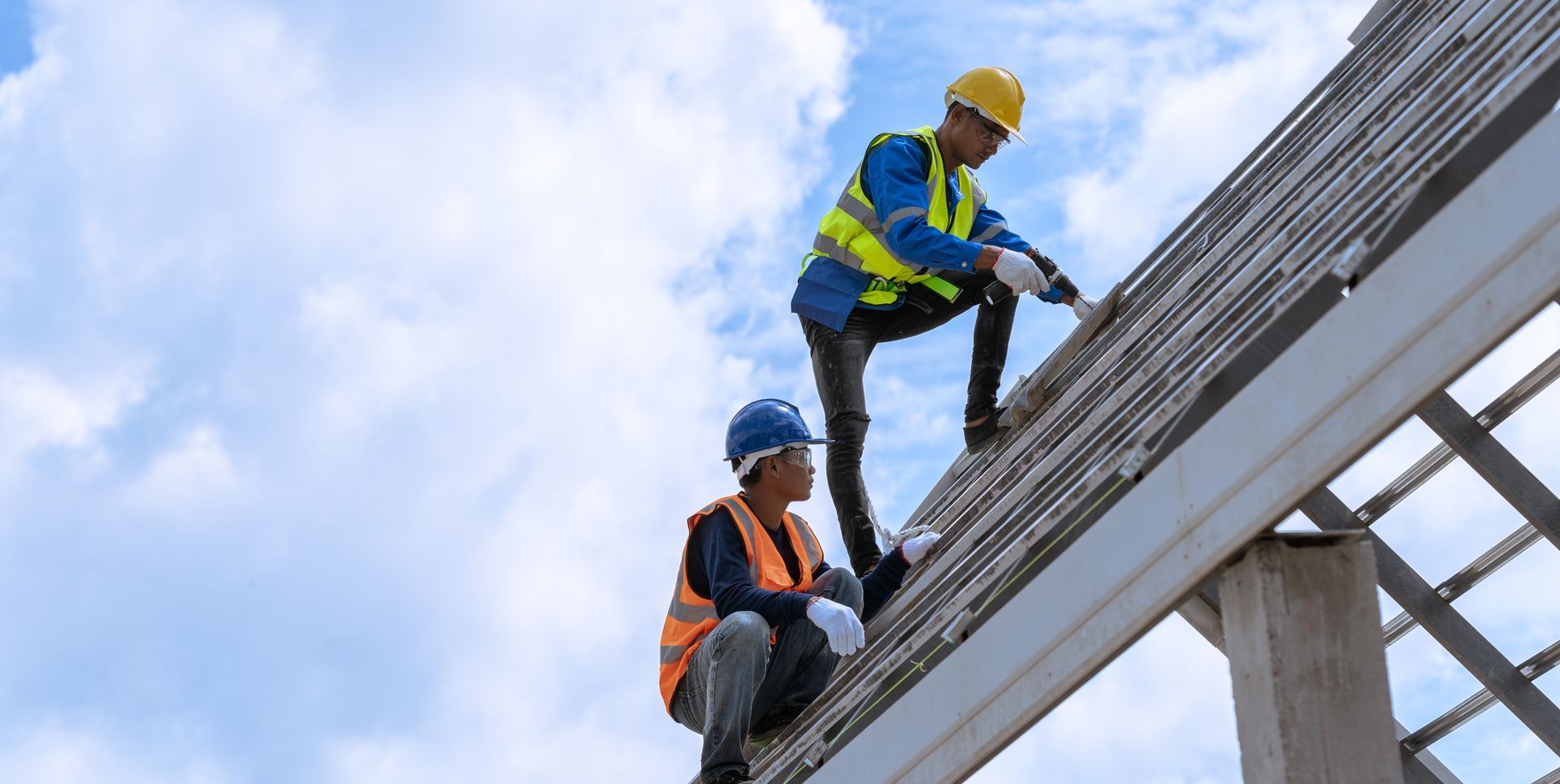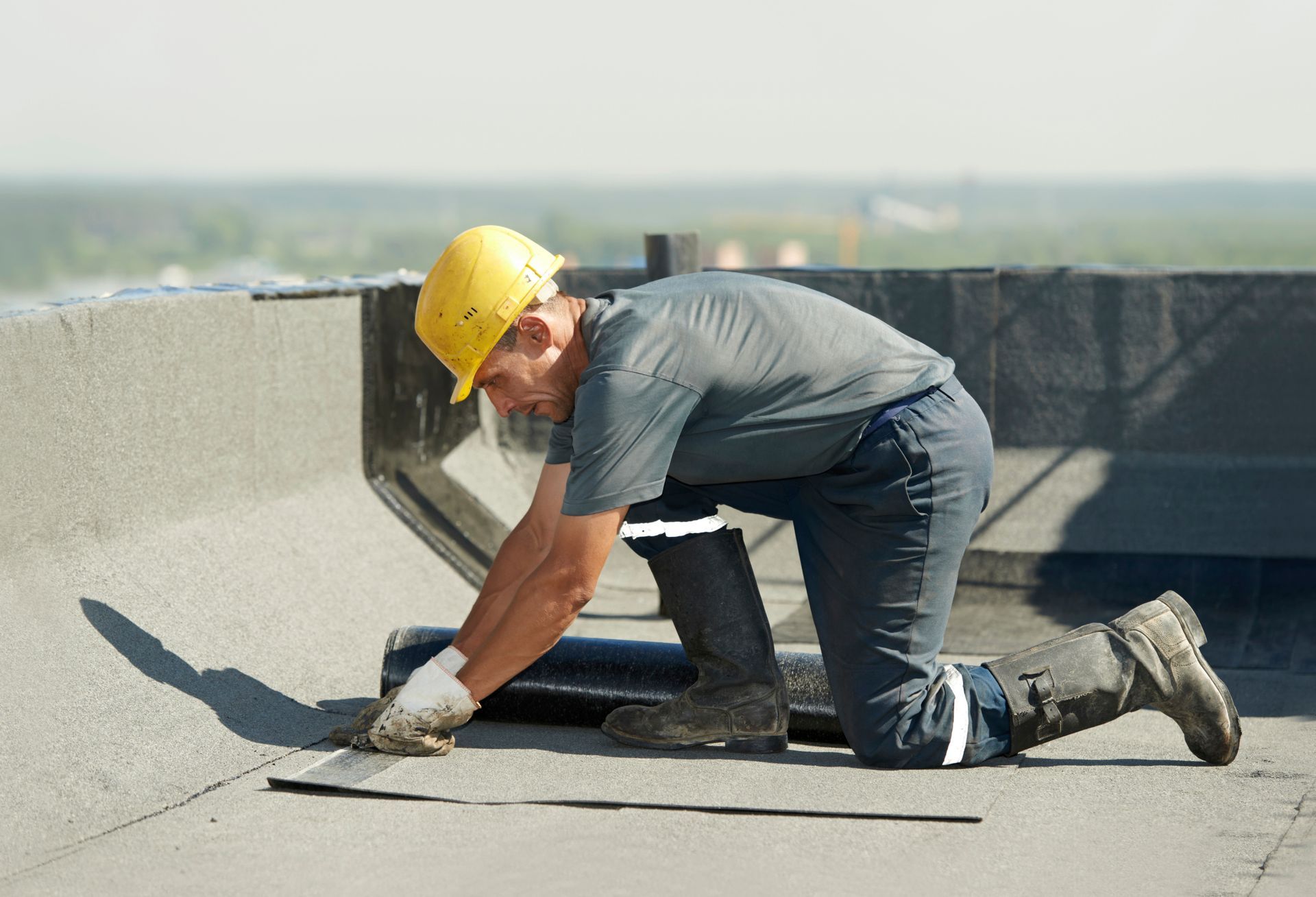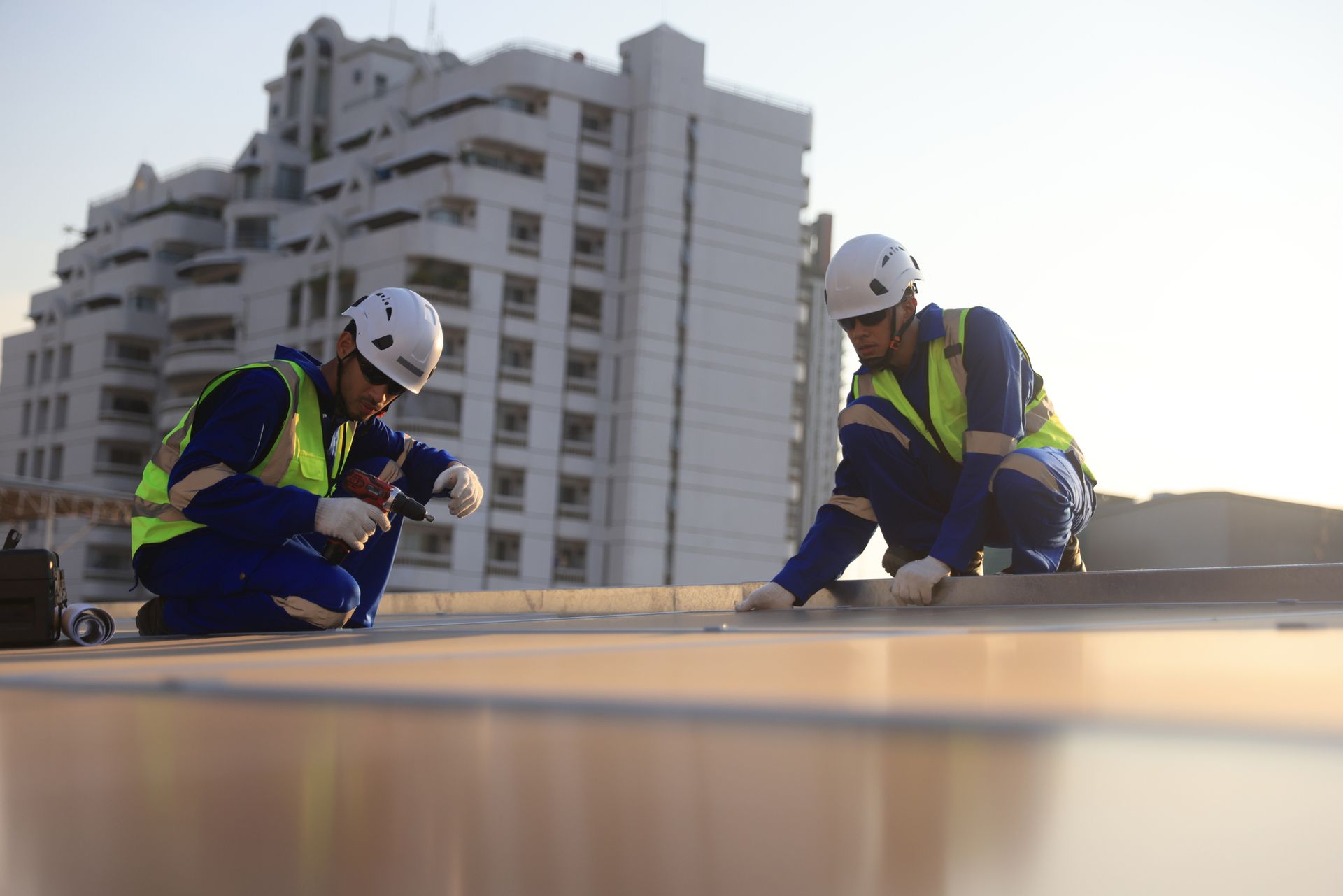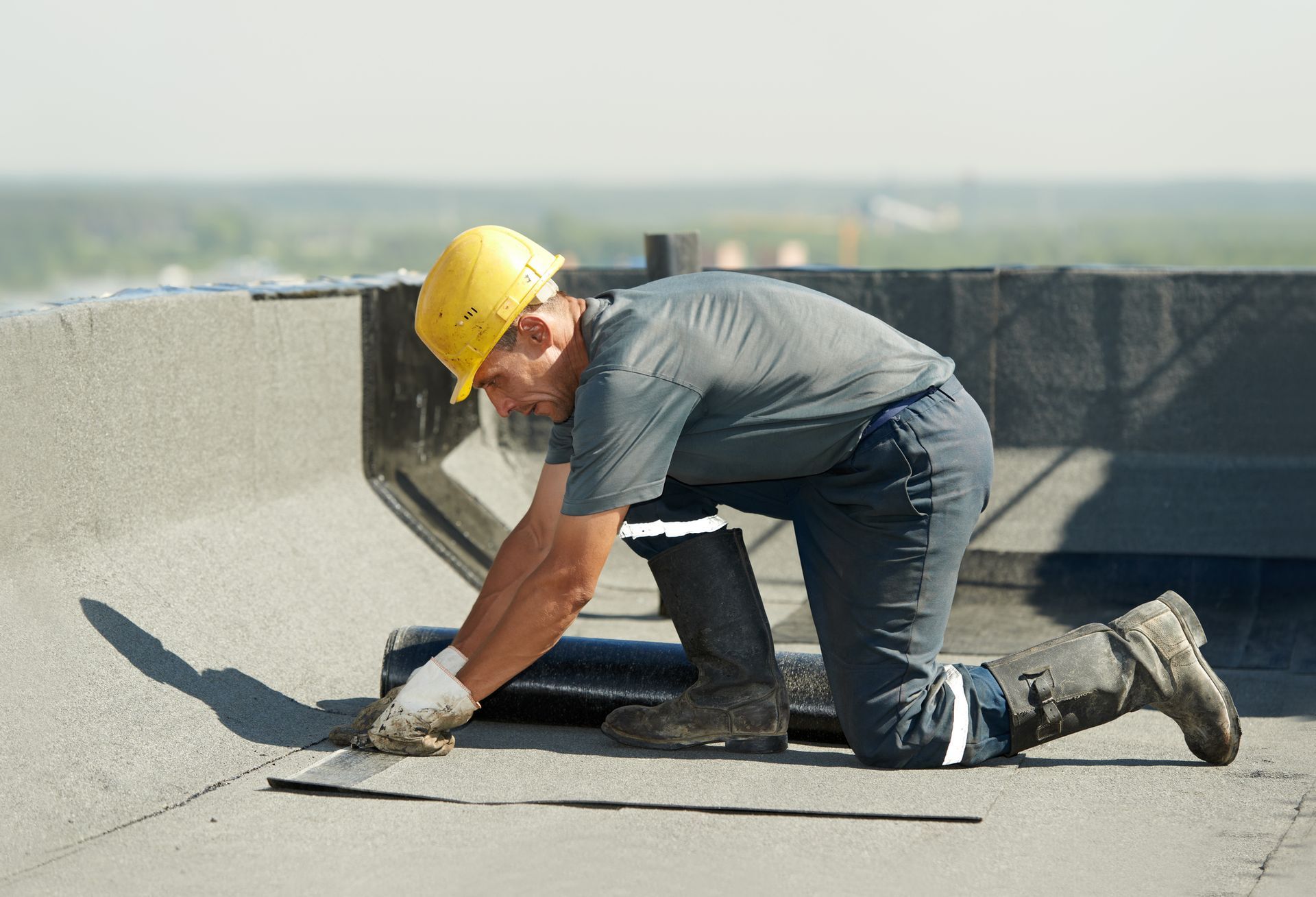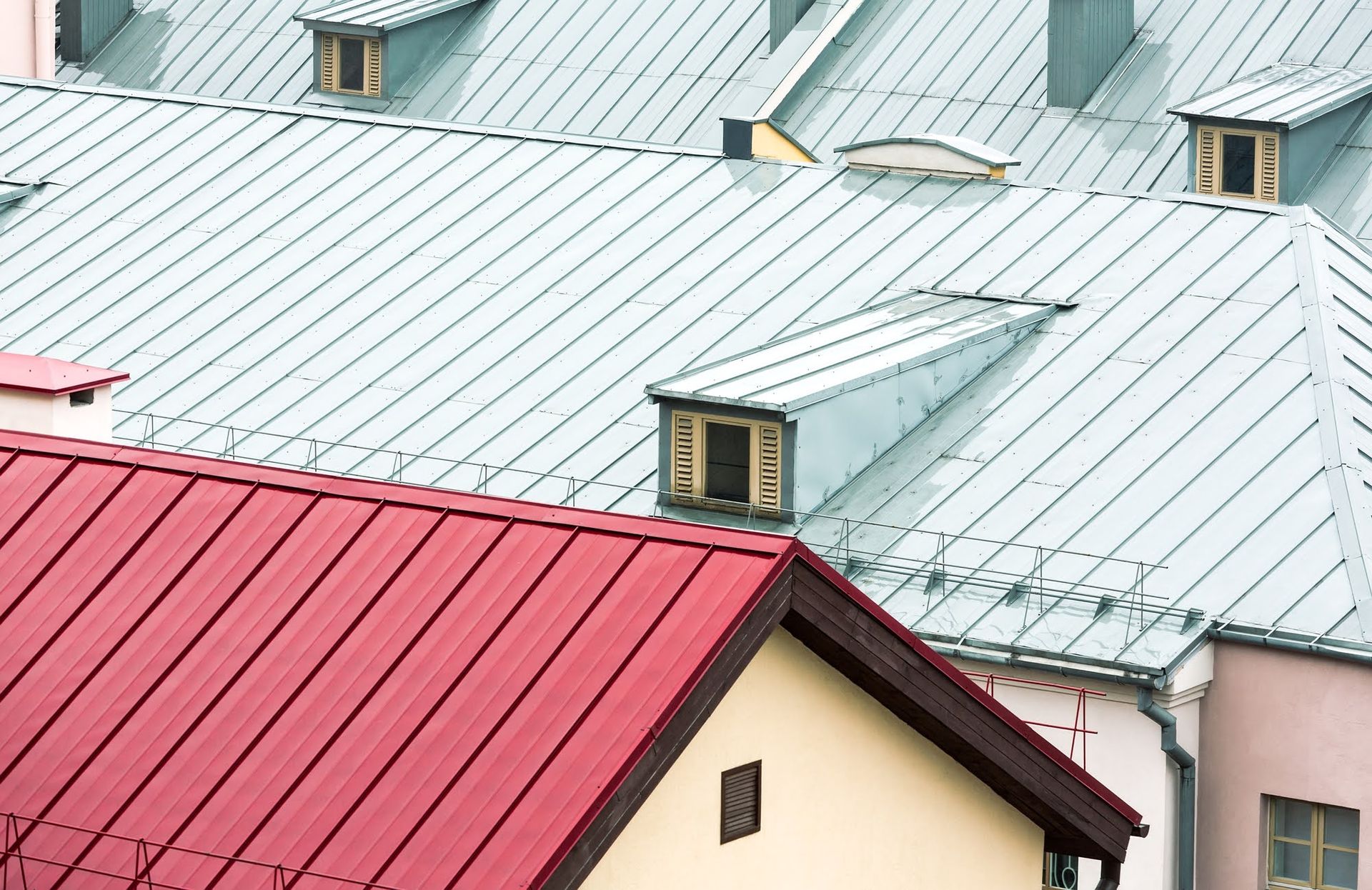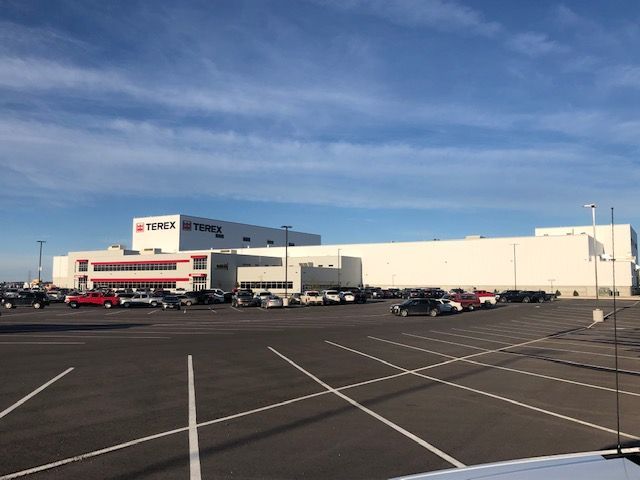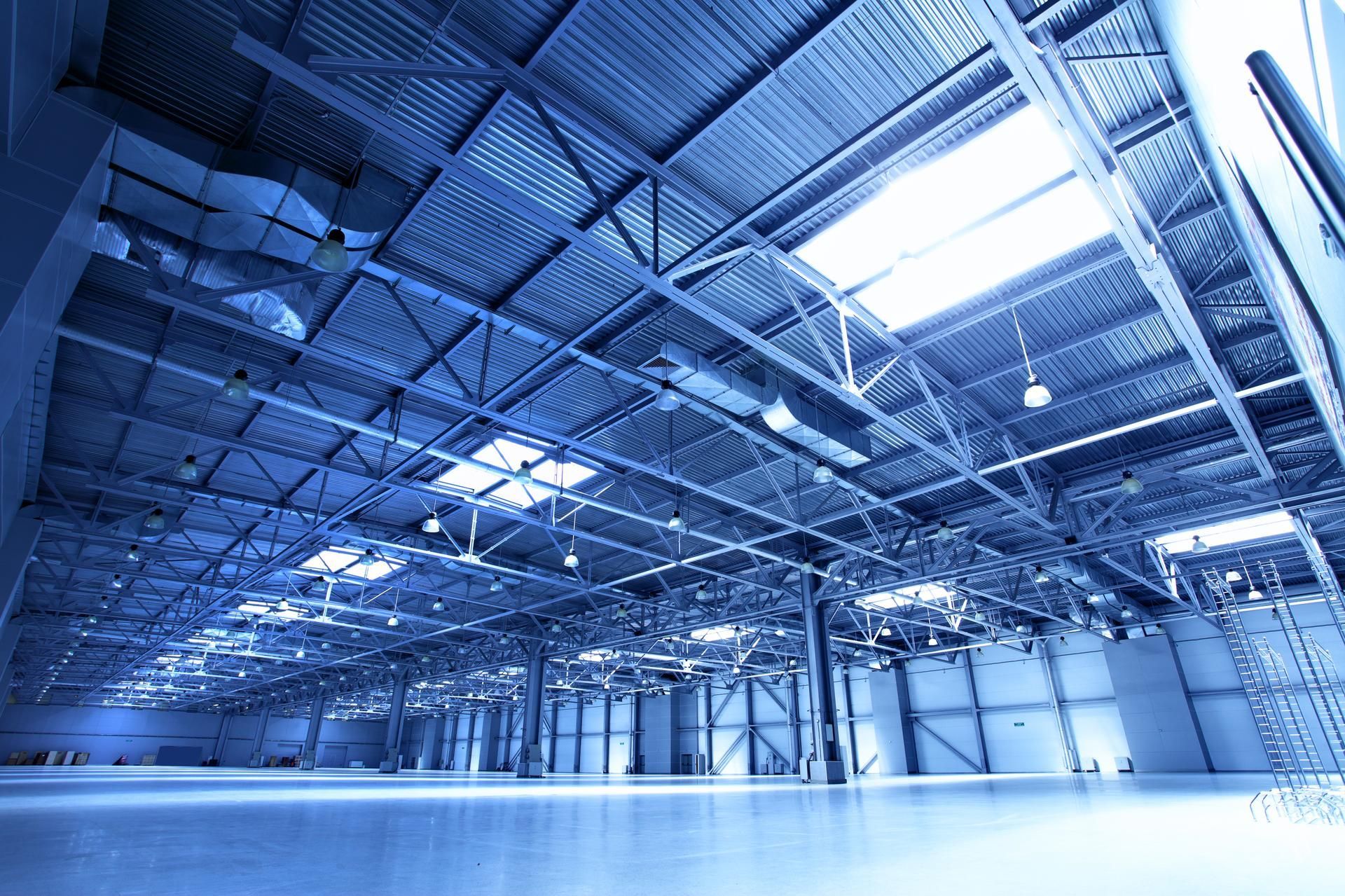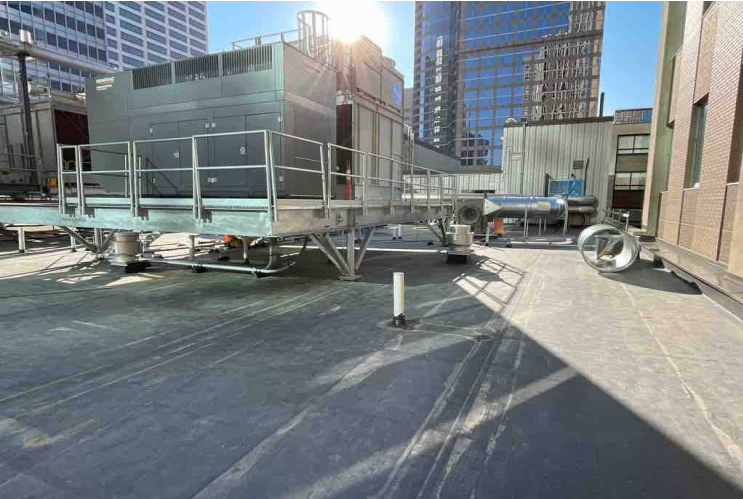A Guide to Single-Ply Membrane Roofs

If you plan to install a new business roof or replace your existing one, then you know you have many commercial roof options. One of those options is a single-ply roof membrane. If you have not yet chosen the commercial roof type you would like to have installed, then you should learn more about this roof type and all of your single-ply membrane roof options.
Read on to learn more about single-ply membrane roof advantages, your single-ply membrane roof options, and other important facts about these roofs.
Single-Ply Membrane Roof Advantages
Every type of commercial roof system has its unique advantages. Single-ply membrane roofs have unique advantages and disadvantages over multi-ply built-up roofs.
Membrane roofs are very lightweight. While lightweight roofs benefit all buildings, they are especially beneficial for aging buildings. The structural components of an aging building are typically weaker than when the building was first constructed. A heavy roof can place unnecessary stress on these weakened components and, over the long run, cause the need for replacement of these components sooner than necessary.
Unlike some newer roof materials, membrane roofs have been used in the commercial roofing industry for over half a century, and they are still popular. Their remained popularity shows that many commercial building owners have been very satisfied with the performance of this roof type.
Single-ply membrane roofs are also very durable and low-maintenance. If roof repairs are ever necessary, these repairs are typically quick and easy due to the simplicity of this roof design.
Single-Ply Roof Membrane Types
While there are many types of single-ply membrane roofs, there are three main types used for commercial roofing projects: ethylene propylene diene monomer (EPDM), thermoplastic polyolefin (TPO), and polyvinyl chloride (PVC) membranes. Each type has their unique advantages and disadvantages.
Ethylene Propylene Diene Monomer (EPDM) Roofing
Ethylene Propylene Diene Monomer (EPDM) is a classic single-ply membrane roof type that has been in use for over 60 years. EPDM is typically a mixture of recycled tires, sawdust, and slate. Since recycled tires are used to create this roof membrane type, EPDM roofing is considered a “green” roof type.
While naturally black and prone to damage by the sun’s harsh UV rays over time, EPDM roofing can be covered with a white reflective coating. When covered with this white coating, black EPDM roofing can reflect the sun’s rays to help keep your building cooler naturally and help your roof maintain its integrity when exposed to the sun’s hot UV rays.
In addition, black EPMD roofs offer natural insulation that can help keep your building warmer in the winter. The main disadvantage of EPDM roofing is that it is less puncture-resistant than other roof membrane types.
Thermoplastic Polyolefin (TPO) Roofing
While TPO roofing has only been on the market since 1986, it is one of the fastest growing single-ply membrane roof options today. TPO roofing is very affordable because its production is quick and easy. Since TPO is available in many colors, including UV-ray reflecting white, it maintains its integrity in the sun without the need for a special coating meant to reflect UV rays.
Thermoplastic polyolefin is three times more puncture-resistant than EPDM roofing, so it is good option in areas of the country prone to severe weather events that can send hard objects flying onto the roof, such as hail. TPO roofing is also very slick, so sheds rainwater with ease, making it ideal for roofs prone to pooling water.
Polyvinyl Chloride (PVC) Roofing
PVC roofing has been in use for about 50 years. This type of roofing is similar to TPO roofing in many ways. Just like TPO roofing, PVC roofs are come in many colors, including UV ray-reflecting white, and are more puncture-resistant than EPDM roofs. Some types of PVC roofs are also much more fire-resistant than both TPO and EPDM roofs. This type of roof is much more resistant to damage by many types of chemicals, which makes it a good option for use in the chemical industry.
PVC roofing is not considered as environmentally friendly as other single-ply membrane roof options.
Single-Ply Roof Membrane Attachment Options
Once you choose your single-ply membrane roof material, you can then choose between three membrane roof attachment options.
These three attachment options include:
- Mechanical attachment. A mechanically attached membrane roof is only partially attached to the roof with special fasteners.
- Adhered. An adhered roof membrane is attached to the roof with an adhesive.
- Ballasting. A ballasted membrane roof consists of a single-ply membrane that is not adhered or fastened to the roof at all. Instead, a layer of gravel is placed over the membrane to hold it down.
Each single-ply roof membrane attachment option has its unique advantages. The best method for your roof depends on many factors, including the specific type of single-ply membrane you choose to install, the local climate, and your roof type. Speak to your commercial roof installation expert to determine which option is best for your new roof.
Keep this guide to single-ply membrane roofs in mind if you are considering adding a membrane roof to your new or existing commercial building. Contact the commercial roofing experts at Berwald Roofing & Sheet Metal to schedule installation of your single-ply roof membrane today.
The post A Guide to Single-Ply Membrane Roofs appeared first on Berwald Roofing Inc.


